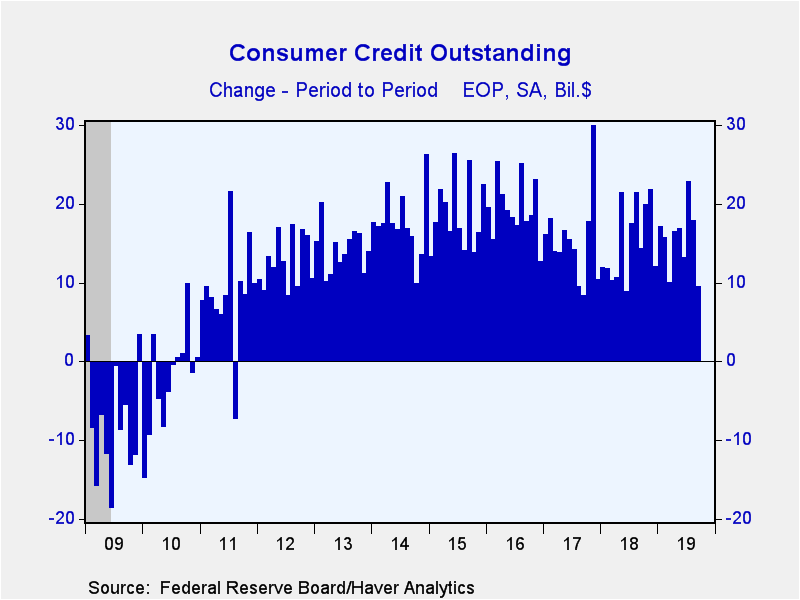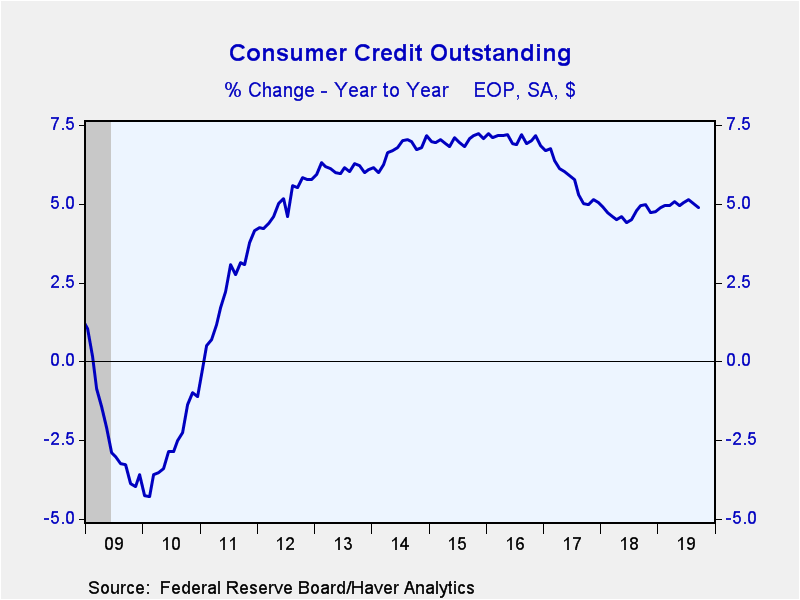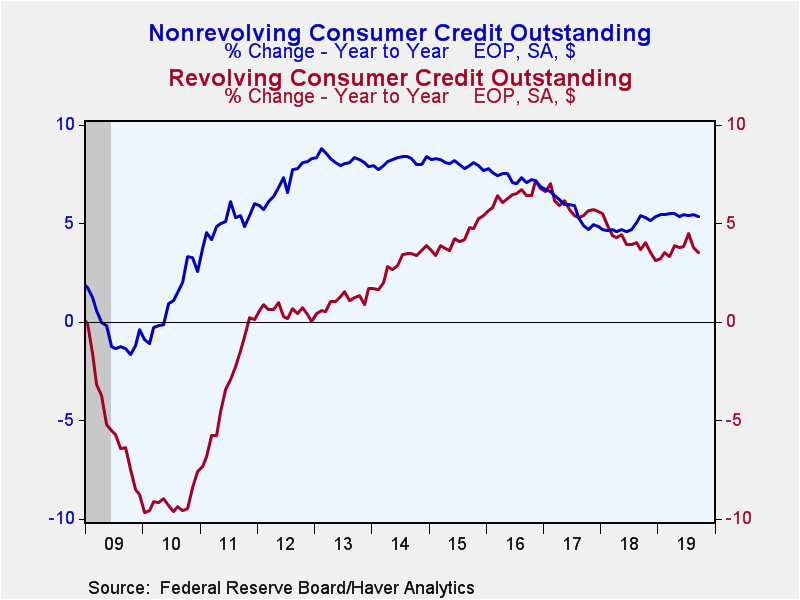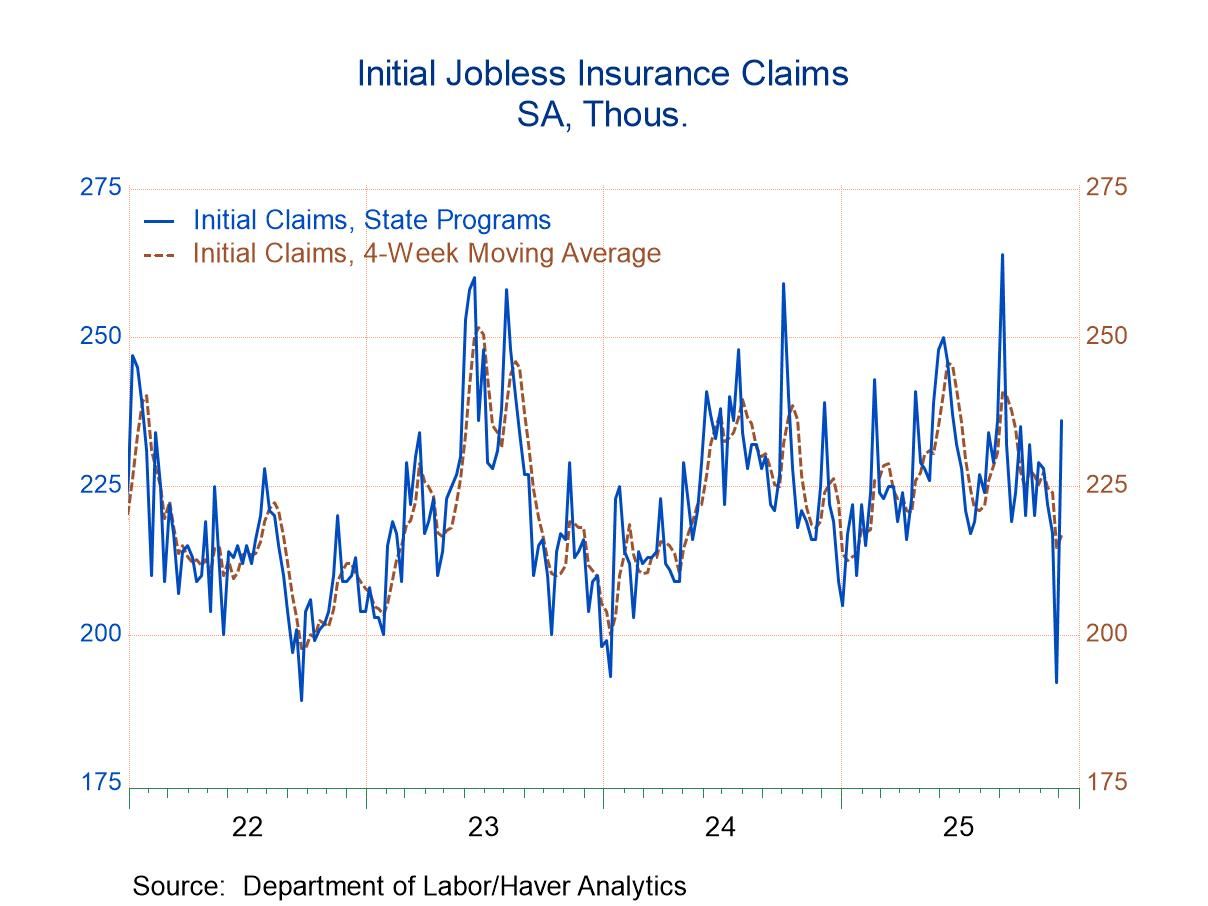 Global| Nov 07 2019
Global| Nov 07 2019U.S. Consumer Credit Usage Slows Sharply
by:Tom Moeller
|in:Economy in Brief
Summary
The weakening in September retail sales reported last month was very much in evidence in today's consumer credit report. Consumer Credit Outstanding increased $9.52 billion (4.9% y/y) during September following a $17.83 billion August [...]
The weakening in September retail sales reported last month was very much in evidence in today's consumer credit report. Consumer Credit Outstanding increased $9.52 billion (4.9% y/y) during September following a $17.83 billion August gain, revised from $17.90 billion. A $15.8 billion rise had been expected by the Action Economics Forecast Survey.
Nonrevolving credit usage increased $10.61 billion (5.4% y/y) during September after a $20.05 billion August rise. It was the smallest monthly increase since May. Borrowing by the federal government, which issues over 40% of nonrevolving credit, rose a steady 7.2% y/y. Depository institutions lending (25% of credit) gained an accelerated 6.8% y/y. It was the strongest y/y advance since December 2016 and roughly double the pace late in 2017. Meanwhile, finance company balances rose a steady 1.1% y/y following declines from 2015 to 2018. Credit union loans continued the slowdown which began late last year and rose 5.2% y/y, after 13.0% growth during 2018.
Revolving credit usage posted a $1.11 billion decline (+3.5% y/y) after a $2.21 billion August fall. Credit provided by banks, which makes up 90% of revolving balances, rose a reduced 3.6% y/y. It was growing at a 7.5% y/y pace during the summer of last year. Borrowing from credit unions (6% of the issuance) increased a reduced 6.9% y/y. Borrowing from finance companies fell 0.4% y/y.
Student loan debt rose 5.1% y/y during the third quarter of this year after a 5.3% y/y rise in 2018. Motor vehicle loans grew 4.3% y/y in Q3 following slightly slower growth than that in 2017 and 2018.
These Federal Reserve Board figures are break-adjusted and calculated by Haver Analytics. The breaks in the series in 2005, 2010 and 2015 are the result of the incorporation of the Census and Survey of Finance Companies, as well as changes in the seasonal adjustment methodology.
The consumer credit data are available in Haver's USECON database. The Action Economics figures are contained in the AS1REPNA database.
Consumer Surveys Suggest Economic Conditions Remain Healthy but Growth Is Slowing from the Federal Reserve Bank of Dallas is available here.
| Consumer Credit Outstanding (M/M Chg, SA) | Sep | Aug | July | Sep y/y | 2018 | 2017 | 2016 |
|---|---|---|---|---|---|---|---|
| Total | $9.52 bil. | $17.83 bil. | $22.82 bil. | 4.9% | 4.8% | 5.1% | 6.8% |
| Nonrevolving | 10.61 | 20.05 | 13.75 | 5.4 | 5.4 | 4.9 | 6.9 |
| Revolving | -1.11 | -2.21 | 9.08 | 3.5 | 3.1 | 5.6 | 6.8 |
Tom Moeller
AuthorMore in Author Profile »Prior to joining Haver Analytics in 2000, Mr. Moeller worked as the Economist at Chancellor Capital Management from 1985 to 1999. There, he developed comprehensive economic forecasts and interpreted economic data for equity and fixed income portfolio managers. Also at Chancellor, Mr. Moeller worked as an equity analyst and was responsible for researching and rating companies in the economically sensitive automobile and housing industries for investment in Chancellor’s equity portfolio. Prior to joining Chancellor, Mr. Moeller was an Economist at Citibank from 1979 to 1984. He also analyzed pricing behavior in the metals industry for the Council on Wage and Price Stability in Washington, D.C. In 1999, Mr. Moeller received the award for most accurate forecast from the Forecasters' Club of New York. From 1990 to 1992 he was President of the New York Association for Business Economists. Mr. Moeller earned an M.B.A. in Finance from Fordham University, where he graduated in 1987. He holds a Bachelor of Arts in Economics from George Washington University.










